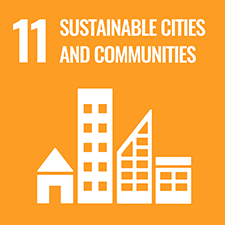
Augmented Reality Technology Application in Intralogistics in Vietnam
12 Apr, 2022
International trade agreements will open up immense opportunities for Vietnamese logistics industry in the coming years, leading to the development of warehousing and transportation services. However, most domestic logistics enterprises are completely small-and-medium-sized companies. The management system is not synchronized as well as the shortage of capital, experience, technology and labor qualifications, the competitiveness of Vietnamese logistics industry is much lower than that in the world. Recently, augmented reality technology (AR - Augmented Reality) has opened up many new directions of application and development, helping to improve operational efficiency and competitiveness of enterprises in the field of Logistics in general and Intralogistics services in particular (Winkler & Zinsmeister, 2019).

Augmented reality technology is rated relatively high in terms of investment value as well as the scope and initial investment cost that can match the existing facilities and operating procedures of enterprises operating in the field of Intralogistics in Vietnam. However, most enterprises operating in the field of Intralogistics Vietnam have not applied augmented reality technology yet. The integration of this technology into organizational processes in the field of Intralogistics in the world in general and Vietnam in particular has posed diverse challenges. Researches on the application of augmented reality technology in the field of Logistics and Intralogistics focus only on the ability to integrate technology and its impact on business processes, almost of which does not analyze the confusion and complexity obstacles that can arise from integrating augmented reality technology into the organization. The article analyzes and proposes policies to increase the likelihood of success when applying augmented reality technology to Intralogistics services in Vietnam.
Stages with highly potential application of augmented reality technology in Intralogistics activities in Vietnam:
Firstly, applying augmented reality technology in order-picking will bring out the best in the potential and benefits of this technology. Given the important role of warehousing, goods picking takes a large amount of time and resources and accounts for about 55% of total operating costs (Khanzode & Shah, 2017). Moreover, the demand for fast and high-quality delivery is increasing in the age of technology, resulting in pressure to streamline the picking process. However, most warehouses around the world in general and Vietnam in particular are handling products by manual process with a paper-based approach. In addition, this type of work is often performed by short-term workers who may lack the experience and skill to do it without error. As a result, a number of augmented reality technology innovations have been applied to large warehouses that store overcrowded goods during the peak seasons.
Secondly, train employees to perform value-added services. Augmented reality technology is used to train warehouse staff at a lower cost with flexible times and places. This type of training is useful during peak seasons when the warehouse workforce typically multiplies and boosts the productivity of newly hired warehouse workers to the highest possible level.
The roadmap of applying augmented reality in companies operating in the field of Intralogistics in Vietnam can be summarized through five steps as follows:
Setting goals for augmented reality apps
Various tasks and subtasks can be implemented or improved using augmented reality technology but may require varying levels of technology and complexity. For example, a company may choose to install an appropriate augmented reality app on a smartphone. Complex devices like augmented reality smart glasses can be used for maintenance or assembly tasks along with the right software.
Creating your own digital content
Augmented reality applications include software, hardware and digital content. Corporate hardware and software can be easily purchased; however, digital content, as the core of the application, is the sole asset of the company and should be created within the company. For an object to be presented in an augmented reality application, it needs to be digitized. This can be achieved by customizing existing 3D models of products and machines or by creating new models using 3D modeling or 2D/3D scanning. The wisest strategy for the company is to make a list of existing digital assets in 3D and other forms, after that, proceeding to build the digital content using 3D modeling or 2D, 3D scanning. On the other hand, digitizing documents of technical instructions listed as assembly instructions, machine repair instructions, design procedures and so on into digital content suitable for augmented reality applications is a complex task that requires a team that includes the technologists from this company besides augmented practical specialists.
Locating augmented reality devices and connected objects
Each of these technologies has both advantages and disadvantages. The marker pen technology is the simplest and seemingly most reliable method for Vietnamese companies. In the future, researchers are improving and upgrading these methods and developing hybrid methods based on a combination of available technologies.
Determining the required augmented reality device
For simple augmented reality applications, devices listed as smartphones and tablets are suitable. The current augmented reality devices can receive manual commands (smartphones and tablets), voice commands (smartphones, tablets and specialized glasses) and eye commands (specialized glasses). Devices that receive eye and voice commands save time and allow the users’ hands to perform other tasks. However, due to the nature of noisy industrial environments, these devices are difficult to filter out noise and function properly. As a result, companies use gear that aligns with their goals in the short term and develop a cross-platform approach that enables augmented reality experiences across multiple device platforms in the long term.
Defining an approach to augmented reality software development
Two common approaches to augmented reality software development are as follows: (i) standalone software that loads onto a device and can be run without an Internet connection, and (ii) access to augmented reality content hosted on the cloud. The first approach is reliable and suitable for high-resolution experiences; nevertheless, it is not easy to change digital content. The second approach requires an Internet connection, however, developers can easily change and upgrade content on multiple devices. The second approach is suitable for companies that require frequent changes to digital content.
In addition, in order to increase user acceptance, businesses need to pay attention to solutions that focus on increasing communication between employees and reducing concerns regarding privacy risks of users and those around them during using their augmented reality devices.

Augmented reality applications, currently, are being the most popular in Intralogistics worldwide. (Source: Collected photos)
The most promising stages for augmented reality application in Vietnam are order picking and training that can later be developed into other forms listed as maintenance, human-robot cooperation, logistics planning. Key steps of augmented reality implementation in companies are also outlined, covering broader requirements, including non-technological requirements like the ease of application use and, most importantly, two aspects that risk the privacy of users and those around them. With the increasing interconnectedness and popularity of smart devices, two aspects of privacy risk need special attention for further study. In addition, the following areas of future research selected are as the most promising: object and site recognition; eye and voice control; control industrial systems through augmented reality. These areas allow to combine existing technologies and exploit their best properties to achieve the highest achievements, therefore, improving the digital industrial environment in Intralogistics services.
Please refer to the full research of Augmented Reality Technology Application in Intralogistics in Vietnam here tại đây. Author: MSc. Nguyễn Ngọc Danh – Economics Faculty, UEH School of Economics, Law and State Management.
This article in Series of spreading researches and applied knowledge from UEH with “Research Contribution For All - Nghiên Cứu Vì Cộng Đồng” message, UEH would like to invite dear readers to look forwards to Newsletter ECONOMY NO # 36 “APPLYING CRITICAL THINKING DESIGN INTO DIGITAL TRANSFORMATION AND PRACTICAL LESSONS”
News, photos: Author group, UEH Department of Marketing – Communication.









